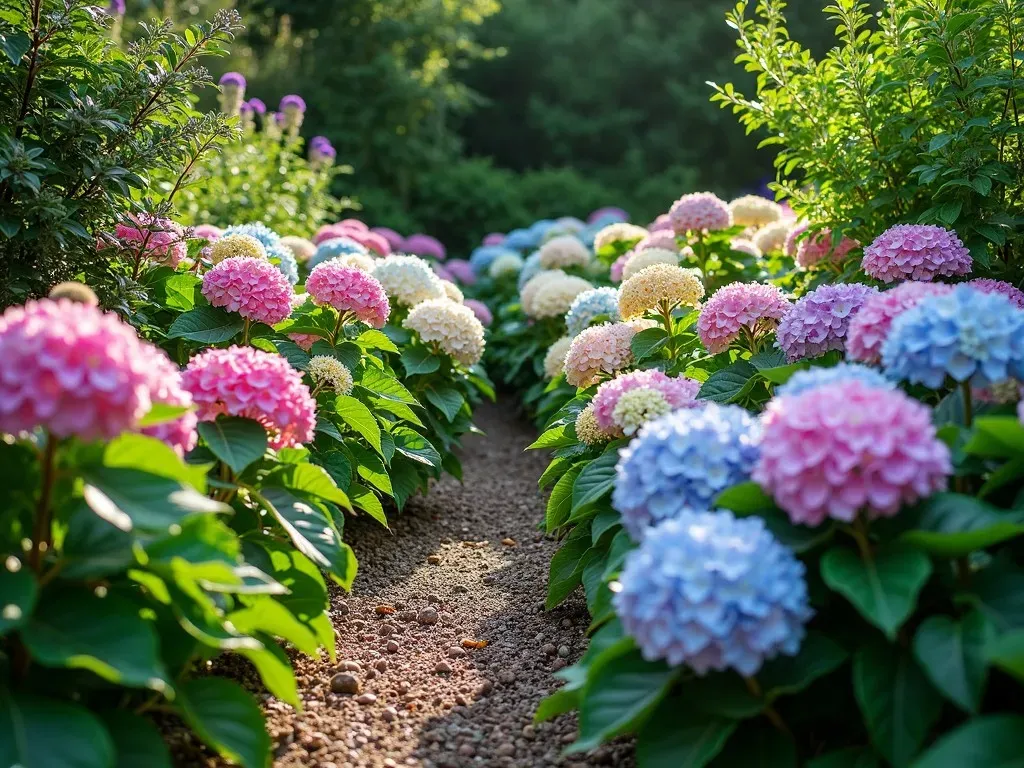Hydrangeas are stunning flowering plants known for their large, lush blooms that can vary in color from pink to blue, purple, and white. A common question among gardening enthusiasts is: do hydrangeas spread on their own? The answer is yes, hydrangeas do have the ability to spread on their own, although the methods and effectiveness can vary widely among different species.
How Hydrangeas Spread
Hydrangeas can spread through several natural methods, including:
-
Self-seeding: Some hydrangeas produce seeds that can fall to the ground and germinate, leading to new plants. However, it’s important to note that not all hydrangeas produce viable seeds, and even those that do may not produce plants that are true to the parent plant.
-
Layering: This is a natural propagation technique where lower branches of the hydrangeas touch the ground and begin rooting, thereby creating new plants. This is especially common in several species, such as the climbing hydrangea.
-
Division: While this is not a method that hydrangeas use on their own, gardeners can divide established plants into several sections, each of which can grow into a new plant.
Quick Facts about Hydrangeas
| Characteristic | Detail |
|---|---|
| Family | Hydrangeaceae |
| Common Varieties | Bigleaf, Panicle, Smooth, Oakleaf |
| Growing Zones | Ranges from USDA Zone 3 to 9 |
| Typical Height | 3 to 10 feet (1 to 3 meters) |
| Bloom Colors | Pink, Blue, Purple, White |
| Soil Requirements | Well-drained, pH 5.5 – 6.5 |
Self-Seeding Hydrangeas
While some hydrangeas can spread via self-seeding, it’s essential to understand not all species are prolific seed producers. For instance, few popular varieties, like hydrangea macrophylla, might produce seeds that are viable but may not develop into offspring that reflect the traits of the parent plant.
Pros and Cons of Self-Seeding
| Pros | Cons |
|---|---|
| Encourages natural plant diversity | Offspring may not resemble parent plant |
| Less maintenance involved | Requires specific conditions for germination |
| Potentially fills in garden areas | May overcrowd if not managed |
Layering Technique: A Natural Wonder
Layering is a fascinating method through which hydrangeas can spread on their own. When a branch from a hydrangea touches the ground, it can develop roots at the point of contact. This not only allows the plant to strengthen itself but may also result in a new hydrangea plant. This technique is favored because it often results in new plants that are genetically identical to the parent.
Simple Steps for Natural Layering:
- Choose a lower branch that is flexible.
- Bury the branch partially in the soil, leaving the tip exposed.
- Water regularly to stimulate root growth.
- After a season, gently detach the new plant and transplant.
Should You Worry About Over spreading?
While hydrangeas can spread on their own, they are not invasive in the traditional sense. However, if allowed to grow unchecked, some varieties can occupy more space over time. Regular maintenance, including trimming dead stems and managing growth, can help keep them in check.
Managing Hydrangea Growth
- Regular Pruning: Annual pruning will control size and encourage new growth with abundant blooms.
- Spacing: Ensure adequate spacing when planting hydrangeas to provide room for their natural spread.
Frequently Asked Questions
Q1: What are the best conditions for hydrangeas to spread?
A1: Hydrangeas thrive in well-drained soil with adequate moisture and prefer full sun to partial shade. Proper watering and nutrient-rich soil will enhance their growth and ability to spread.
Q2: Can I encourage my hydrangeas to spread more quickly?
A2: Yes! You can encourage spreading by ensuring the soil is rich in organic matter and by gently bending lower branches toward the ground for layering.
Q3: Are all Hydrangea Types the same in their spreading capabilities?
A3: No, different types of hydrangeas have varying abilities to spread. For instance, panicle hydrangeas (Hydrangea paniculata) may propagate differently compared to bigleaf hydrangeas (Hydrangea macrophylla).
Q4: Should I worry about hydrangeas taking over my garden?
A4: While hydrangeas can spread, they are generally not invasive and can be managed with regular pruning and spacing. If you prefer a tidy appearance, monitor their growth.
Q5: How can I propagate hydrangeas more efficiently?
A5: For efficient propagation, consider using division or cuttings during the dormant season, which are controlled methods compared to self-seeding or layering.

The Balance Between Beauty and Control
In summary, hydrangeas do have multiple ways to spread on their own, whether through self-seeding or layering. While these methods introduce natural variability and new growth options, they also necessitate consideration on the part of gardeners. A strategic approach to planting, including spacing and regular maintenance, can help you enjoy these breathtaking plants while avoiding unwanted overgrowth in your garden.
Whether you are a seasoned gardener or a curious beginner, understanding how hydrangeas spread enriches your gardening experience and reinforces the beauty these lush plants can deliver. For more information on Hydrangea Care and propagation, you can visit Garden Fine. Happy gardening!



